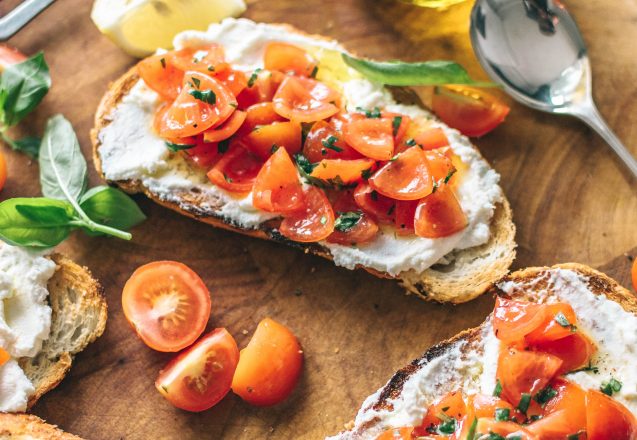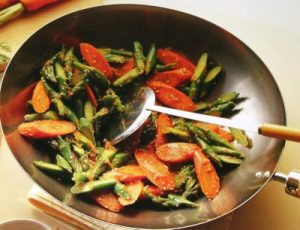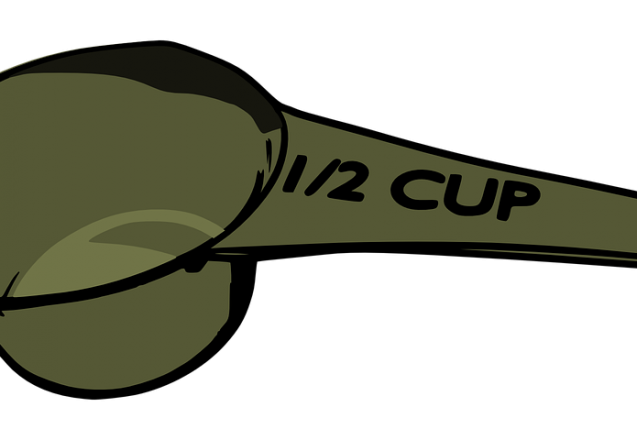Strength Training Does More Than Just Build Muscles
 If you skip strength training because you don’t want big bulging muscles, the good news is that you don’t have to develop them if you workout right. In fact, for women, it’s nearly impossible, even if your goal is getting a set of guns that everyone would envy and for men, the right training can tone and build some muscle without getting the look of body builders that takes far more effort and the right type of training.
If you skip strength training because you don’t want big bulging muscles, the good news is that you don’t have to develop them if you workout right. In fact, for women, it’s nearly impossible, even if your goal is getting a set of guns that everyone would envy and for men, the right training can tone and build some muscle without getting the look of body builders that takes far more effort and the right type of training.
Strength training can help you avoid injury.
Whether it’s in the gym or at home, pulled muscles and falls can occur. While strength training won’t alert you to that child’s toy on the stairs that you trip over, it can prevent injury from doing every day tasks, like lifting a child or picking up a box. The boost in your strength that the training provides helps make muscles more resilient and resistant to injury. It also helps decrease the risk of falls.
Strength training will help you take off weight and keep it off permanently.
While aerobic exercise does burn a lot of calories, strength training is actually better for long term weight loss. When you burn calories during aerobic exercise, the body isn’t picky where it gets those calories. It burns both lean muscle mass and fat tissue. The more lean muscle mass you have, the more calories you burn twenty-four/seven, so having less means a lower metabolism. Strength training builds muscle tissue as it burns calories, boosting your metabolism and making weight loss even easier.
Prevent muscle wasting and osteoporosis with strength training.
After your mid 30s, most people start losing muscle mass. Sarcopenia, the loss of muscle mass that can be as much as three to five percent per year if you’re inactive. When you lose muscle mass, bone loss tends to follow, which is why osteoporosis and sarcopenia often go hand in hand. Many larger studies show that high-intensity resistance training, not only helps prevent or even reverse osteoporosis, it also improves balance, strength and muscle mass that can help prevent broken bones and falls. Studies also show it does it even better than most pharmacological or nutritional approaches.
- You’ll look thinner than your weight indicates and have a body without ugly bulges and rolls when you include strength training in your workout.
- Strength training, like all types of workouts, boosts your endorphins while burning off the hormones of stress.
- Strength training can improve the way your muscles work together. That can improve your balance, coordination and even posture. It reduces the risk of falling by as much as 40 percent, according to one study.
- One amazing discovery about strength training is that it actually can help control pain and help with chronic conditions. One study showed that people with arthritis who did strength training got as much relief as they did with pain medication. It also helps control glucose levels.



 I get a lot of questions from clients in Florida and other areas about the effect of diet on inflammation. There is a connection and there’s even a new branch of the medical field studying the effects of food on illness or rather, focusing on food for health. Inflammation isn’t bad. It’s a natural process that’s necessary to keep people from dying from infection and injury. Inflammation sends a message to the immune system to come to the rescue when tissue is damaged or subject to invasion by viruses, bacteria or other foreign microbes. Without inflammation, people could die from small wounds that easily would become infected.
I get a lot of questions from clients in Florida and other areas about the effect of diet on inflammation. There is a connection and there’s even a new branch of the medical field studying the effects of food on illness or rather, focusing on food for health. Inflammation isn’t bad. It’s a natural process that’s necessary to keep people from dying from infection and injury. Inflammation sends a message to the immune system to come to the rescue when tissue is damaged or subject to invasion by viruses, bacteria or other foreign microbes. Without inflammation, people could die from small wounds that easily would become infected. Contrary to some people’s belief, food can taste good and be healthy. In the past, there’s been food offered that was loaded with vitamins and processed to include plenty of protein and other nutrients. Those products often tasted like vitamin soaked cardboard, giving healthy food a bad reputation. Seriously, there’s no reason to eat “processed” healthy food when Mother Nature provides it right on the vine, also providing herbs that add a gourmet taste and healthy nutrients to the mix.
Contrary to some people’s belief, food can taste good and be healthy. In the past, there’s been food offered that was loaded with vitamins and processed to include plenty of protein and other nutrients. Those products often tasted like vitamin soaked cardboard, giving healthy food a bad reputation. Seriously, there’s no reason to eat “processed” healthy food when Mother Nature provides it right on the vine, also providing herbs that add a gourmet taste and healthy nutrients to the mix.
 I’ve watched clients roll their eyes when I suggest adding meal planning and preparation to their fitness program. While meal planning doesn’t necessarily mean you prepare all your meals on the weekend, it’s the way most people with who work outside the home do it. It’s a great way to have your meals and snacks prepared ahead of time so there’s no excuse for take-out or a quick microwave meal. It means the meals will be easy to make in a few minutes, because in most cases, all you have to do is warm them.
I’ve watched clients roll their eyes when I suggest adding meal planning and preparation to their fitness program. While meal planning doesn’t necessarily mean you prepare all your meals on the weekend, it’s the way most people with who work outside the home do it. It’s a great way to have your meals and snacks prepared ahead of time so there’s no excuse for take-out or a quick microwave meal. It means the meals will be easy to make in a few minutes, because in most cases, all you have to do is warm them.
 If you’re like many of my Florida clients, you probably never considered food journals as a technique to shed weight. It’s worth a try because it not only helps you stick with a diet program, it tells a lot about what’s causing the weight gain. The catch is that it takes some time, but you can make it easier. With Smartphones today, there’s a lot of help. Making a recording of everything you eat is one way, sending yourself a text or just using the notes area to jot down what you eat and transferring that information to the official list at the end of the day can make it a lot easier.
If you’re like many of my Florida clients, you probably never considered food journals as a technique to shed weight. It’s worth a try because it not only helps you stick with a diet program, it tells a lot about what’s causing the weight gain. The catch is that it takes some time, but you can make it easier. With Smartphones today, there’s a lot of help. Making a recording of everything you eat is one way, sending yourself a text or just using the notes area to jot down what you eat and transferring that information to the official list at the end of the day can make it a lot easier.
 You hear a lot about calorie/carb calculating apps and may wonder if they’re at all useful. The easy answer, yes! Of course, I believe the best kind of app is one that actually plans the meals for you without the need for you to constantly input information. Those types help you plan your meals and learn how to develop healthy eating habits. It’s why I use that type as part of my training program. However, using an app can help anyone that wants to shed some pounds by lowering their calorie or carb intake.
You hear a lot about calorie/carb calculating apps and may wonder if they’re at all useful. The easy answer, yes! Of course, I believe the best kind of app is one that actually plans the meals for you without the need for you to constantly input information. Those types help you plan your meals and learn how to develop healthy eating habits. It’s why I use that type as part of my training program. However, using an app can help anyone that wants to shed some pounds by lowering their calorie or carb intake.
 Every time I decide to walk to the store, rather than drive, I pass loads of bakeries filled to the brim with seductive sweets. It’s no different in other areas of the country than it is in Florida, sweets are popular. The sweet taste doesn’t mean it’s sweet to your body. In fact, sugar is ruining your health, if you eat a lot of it. There’s a theory that man has a taste for sweet foods, since in the early times, when plants were sweet, it meant they were safe to eat. Today, sugar is in everything and even worse, types of altered natural sugar, like high fructose corn syrup, create even more health issues.
Every time I decide to walk to the store, rather than drive, I pass loads of bakeries filled to the brim with seductive sweets. It’s no different in other areas of the country than it is in Florida, sweets are popular. The sweet taste doesn’t mean it’s sweet to your body. In fact, sugar is ruining your health, if you eat a lot of it. There’s a theory that man has a taste for sweet foods, since in the early times, when plants were sweet, it meant they were safe to eat. Today, sugar is in everything and even worse, types of altered natural sugar, like high fructose corn syrup, create even more health issues.
 It doesn’t matter whether you’re going for a title in body building, hoping to boost your energy or trying to lose weight, to achieve the most, you need to set SMART goals. SMART is an acronym for Specific, Measurable, Attainable, Relevant and Time-Bound. Those words are the outline for the most successful goal setting. First, start with a specific goal. It’s not enough to say you want to get fitter, you need to identify what that means. It could mean you want to lose weight, build strength or improve your endurance. Decide exactly what you want.
It doesn’t matter whether you’re going for a title in body building, hoping to boost your energy or trying to lose weight, to achieve the most, you need to set SMART goals. SMART is an acronym for Specific, Measurable, Attainable, Relevant and Time-Bound. Those words are the outline for the most successful goal setting. First, start with a specific goal. It’s not enough to say you want to get fitter, you need to identify what that means. It could mean you want to lose weight, build strength or improve your endurance. Decide exactly what you want.
 You might think you have a strange set of symptoms that don’t quite go together. That adolescent acne may be back, even though you have a few wrinkles beside those pimples. You may have thinning hair, constipation and weight gain or simply just feel exhausted. These are all signs that you may need to reset your hormones because of an imbalance. Of course, always check with your doctor first, but you can start on these steps until you get into see him or her. They’re natural and can help your overall health even if you don’t have a hormonal problem.
You might think you have a strange set of symptoms that don’t quite go together. That adolescent acne may be back, even though you have a few wrinkles beside those pimples. You may have thinning hair, constipation and weight gain or simply just feel exhausted. These are all signs that you may need to reset your hormones because of an imbalance. Of course, always check with your doctor first, but you can start on these steps until you get into see him or her. They’re natural and can help your overall health even if you don’t have a hormonal problem.
 Is dairy bad or is it super healthy? That’s a hotly debated question. You’ll get a lot of different views on having dairy in your diet and some, more non-conventional views that identify the type of dairy like raw milk. One thing is certain, not everyone can tolerate dairy. Some people even have allergies to it. For both those groups of people, dairy can create horrendous reactions that range from gas and bloating to far more severe effects. Dairy should definitely be part of their diet.
Is dairy bad or is it super healthy? That’s a hotly debated question. You’ll get a lot of different views on having dairy in your diet and some, more non-conventional views that identify the type of dairy like raw milk. One thing is certain, not everyone can tolerate dairy. Some people even have allergies to it. For both those groups of people, dairy can create horrendous reactions that range from gas and bloating to far more severe effects. Dairy should definitely be part of their diet.